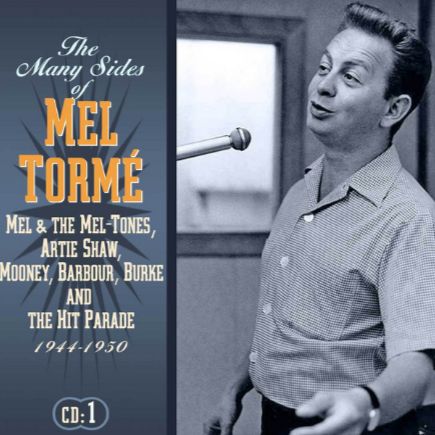Gone With the Wind: une ballade intemporelle devenue standard du jazz
Composée en 1937 par Allie Wruble, sur des paroles de Herb Magidson, Gone With the Wind n’a paradoxalement jamais figuré dans le célèbre film éponyme de 1939. Dès sa sortie, le morceau rencontre un vif succès, s’écoulant à plus d’un million d’exemplaires. Un exploit pour l’époque.
D’abord présentée comme une ballade romantique dans le sillage de Broadway et d’Hollywood, la chanson évoque avec délicatesse les amours envolées et les souvenirs emportés par le temps. Cette thématique universelle, entre mélancolie et douceur, contribue à son attrait durable.
Après une période d’oubli relatif, Gone With the Wind revient sur le devant de la scène à partir de 1946, adoptée par les grandes voix du jazz vocal comme Dick Haymes ou Ella Fitzgerald. Le morceau séduit alors les musiciens pour sa souplesse harmonique et sa ligne mélodique fluide, qui en font un support idéal pour l’improvisation.
Musicalement, Gone With the Wind repose sur une progression d’accords accessible mais subtilement modulée, permettant aussi bien des interprétations intimistes en ballade que des versions plus rythmées et swing.
L’art naissant de Tormé dans une ballade d’après-guerre
Enregistrée à Hollywood le 15 novembre 1947 avec le Dave Barbour Four, l’interprétation de Gone With the Wind par Mel Tormé révèle un jeune chanteur déjà pleinement maître de son vocabulaire musical. Publiée plus tard dans l’album The Many Sides of Mel Tormé, cette version témoigne d’un moment charnière, alors que Tormé quitte progressivement l’étiquette de ‘crooner’ pour affirmer une identité résolument jazz.
Ce qui frappe d’emblée, c’est sa manière d’habiter la ballade sans la surcharger. La voix est souple, légèrement feutrée, mais dotée d’une précision rythmique qui annonce le styliste exceptionnel qu’il deviendra. Tormé joue ici sur les micro-variations du timbre, modulant la ligne mélodique avec une élégance quasi instrumentale. L’influence du scat et du phrasing bebop, déjà perceptible, s’intègre naturellement au climat intimiste de l’arrangement.
Le Dave Barbour Four propose un cadre sonore d’une grande sobriété: guitare agile, ponctuations discrètes du piano et pulsation légère qui laissent toute sa place à la voix. Cette économie de moyens permet à Tormé de développer un art subtil des dynamiques.
Gone With the Wind: una balada atemporal convertida en estándar del jazz
Compuesta en 1937 por Allie Wruble, con letra de Herb Magidson, Gone With the Wind no figuró, paradójicamente, en la famosa película homónima de 1939. Desde su lanzamiento, la canción tuvo un gran éxito, superando el millón de copias vendidas, todo un logro para la época.
Presentada en un principio como una balada romántica en la tradición de Broadway y Hollywood, la canción evoca con delicadeza los amores perdidos y los recuerdos arrastrados por el paso del tiempo. Esta temática universal, entre melancolía y ternura, explica en parte su atractivo perdurable.
Tras un período de relativo olvido, Gone With the Wind volvió al primer plano a partir de 1946, adoptada por grandes voces del jazz vocal como Dick Haymes y Ella Fitzgerald. La pieza conquistó a los músicos por su flexibilidad armónica y su línea melódica fluida, que la convierten en un soporte ideal para la improvisación.
Desde el punto de vista musical, Gone With the Wind se basa en una progresión de acordes accesible pero sutilmente modulada, que permite tanto interpretaciones íntimas en forma de balada como versiones más rítmicas y con sabor swing.
El arte naciente de Tormé en una balada de posguerra
Grabada en Hollywood el 15 de noviembre de 1947 con el Dave Barbour Four, la interpretación de Gone With the Wind por Mel Tormé revela a un joven cantante ya plenamente dueño de su vocabulario musical. Publicada más tarde en el álbum The Many Sides of Mel Tormé, esta versión testimonia un momento crucial, cuando Tormé abandona progresivamente la etiqueta de ‘crooner’ para afirmar una identidad decididamente jazzística.
Lo que impresiona de inmediato es su manera de habitar la balada sin sobrecargarla. La voz es flexible, ligeramente aterciopelada, pero dotada de una precisión rítmica que anuncia al estilista excepcional que llegará a ser. Tormé juega aquí con microvariaciones del timbre, modulando la línea melódica con una elegancia casi instrumental. La influencia del scat y del phrasing bebop, ya perceptible, se integra naturalmente en el clima íntimo del arreglo.
El Dave Barbour Four ofrece un marco sonoro de gran sobriedad: guitarra ágil, puntuaciones discretas del piano y una pulsación ligera que deja todo el espacio a la voz. Esta economía de medios permite a Tormé desarrollar un arte sutil de las dinámicas.
Gone With the Wind: una ballata senza tempo divenuta standard jazz
Composta nel 1937 da Allie Wruble, con testi di Herb Magidson, Gone With the Wind non apparve, paradossalmente, nel celebre film omonimo del 1939. Fin dalla sua uscita, il brano ottenne un grande successo, vendendo oltre un milione di copie, un vero traguardo per l’epoca.
Inizialmente presentata come una ballata romantica sulla scia di Broadway e Hollywood, la canzone evoca con delicatezza gli amori perduti e i ricordi portati via dal tempo. Questa tematica universale, sospesa tra malinconia e dolcezza, contribuisce al suo fascino duraturo.
Dopo un periodo di relativo oblio, Gone With the Wind tornò alla ribalta a partire dal 1946, adottata da grandi voci del jazz vocale come Dick Haymes ed Ella Fitzgerald. Il brano conquistò i musicisti grazie alla sua flessibilità armonica e alla linea melodica fluida, che ne fanno una base ideale per l’improvvisazione.
Dal punto di vista musicale, Gone With the Wind si fonda su una progressione armonica accessibile ma sapientemente modulata, che si presta sia a interpretazioni intime in forma di ballata, sia a versioni più ritmiche e swinganti.
L’arte nascente di Tormé in una ballata del dopoguerra
Registrata a Hollywood il 15 novembre 1947 con il Dave Barbour Four, l’interpretazione di Gone With the Wind da parte di Mel Tormé rivela un giovane cantante già pienamente padrone del proprio vocabolario musicale. Pubblicata in seguito nell’album The Many Sides of Mel Tormé, questa versione testimonia un momento cruciale, quando Tormé abbandona progressivamente l’etichetta di ‘crooner’ per affermare un’identità decisamente jazz.
Ciò che colpisce subito è il suo modo di abitare la ballata senza appesantirla. La voce è flessibile, leggermente ovattata, ma dotata di una precisione ritmica che annuncia lo stilista eccezionale che diventerà. Tormé gioca qui sulle micro-variazioni del timbro, modulando la linea melodica con un’eleganza quasi strumentale. L’influenza dello scat e del phrasing bebop, già percepibile, si integra naturalmente nell’atmosfera intimista dell’arrangiamento.
Il Dave Barbour Four propone un quadro sonoro di grande sobrietà: chitarra agile, discrete puntature del pianoforte e una pulsazione leggera che lascia pieno spazio alla voce. Questa economia di mezzi permette a Tormé di sviluppare un’arte sottile delle dinamiche.
Gone With the Wind: a timeless ballad turned jazz standar
Composed in 1937 by Allie Wruble, with lyrics by Herb Magidson, Gone With the Wind—despite its title—was never actually featured in the famous 1939 film of the same name. Upon its release, the song became an immediate hit, selling over a million copies—an impressive feat for the time.
Initially introduced as a romantic ballad in the Broadway-Hollywood tradition, the song delicately evokes lost love and memories swept away by time. This universal theme—mingling melancholy and sweetness—contributes to its lasting appeal.
After a period of relative obscurity, Gone With the Wind resurfaced in 1946, embraced by leading jazz vocalists like Dick Haymes and Ella Fitzgerald. Musicians were drawn to the tune’s harmonic flexibility and flowing melodic line, making it a favorite vehicle for improvisation.
Musically, Gone With the Wind is built on a chord progression that is both accessible and subtly modulated, allowing for intimate ballad-style interpretations as well as more rhythmically driven swing versions.
Tormé’s emerging artistry in a postwar ballad
Recorded in Hollywood on November 15, 1947, with the Dave Barbour Four, Mel Tormé’s interpretation of Gone With the Wind reveals a young singer already fully in command of his musical vocabulary. Later released on the album The Many Sides of Mel Tormé, this version captures a pivotal moment as Tormé gradually moves away from the ‘crooner’ label to assert a distinctly jazz identity.
What stands out immediately is his way of inhabiting the ballad without weighing it down. The voice is supple, slightly velvety, yet marked by rhythmic precision that foreshadows the exceptional stylist he would become. Tormé plays with micro-variations of tone, shaping the melodic line with an almost instrumental elegance. The influence of scat and bebop phrasing, already perceptible, blends naturally into the arrangement’s intimate atmosphere.
The Dave Barbour Four provides a sound framework of great restraint: agile guitar, discreet piano punctuations, and a light pulse that gives the voice ample space. This economy of means allows Tormé to cultivate a subtle art of dynamics.


